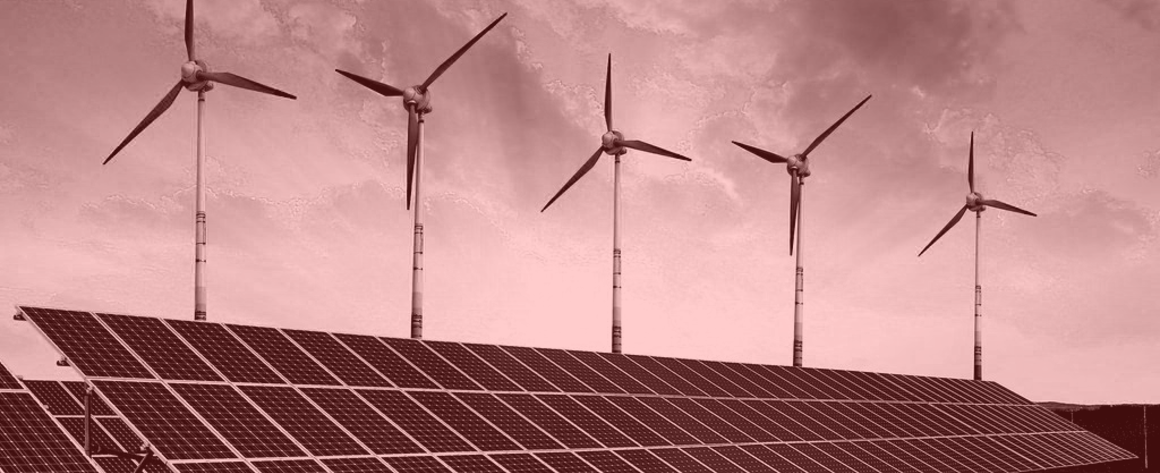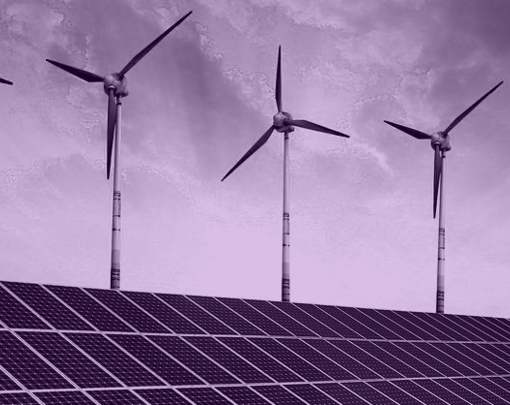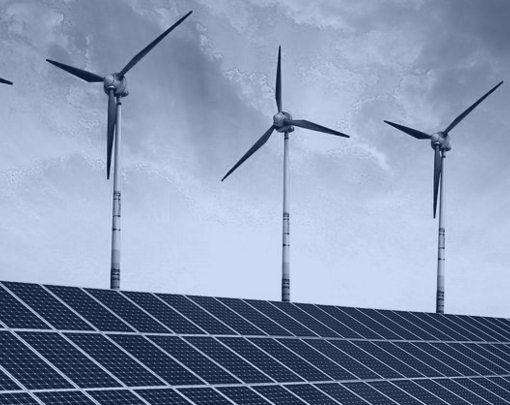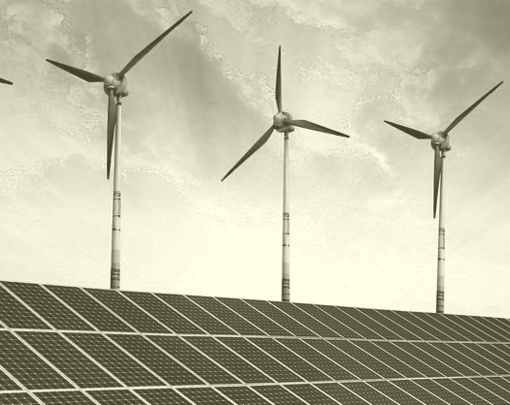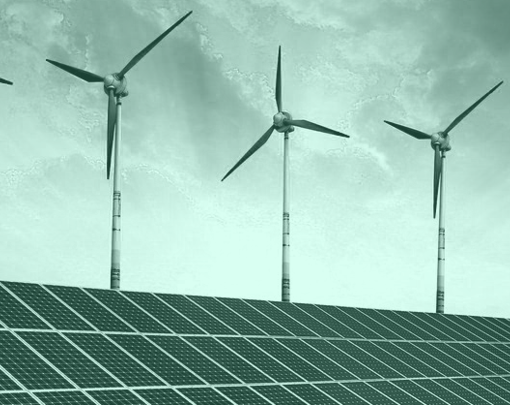Investor-owned utilities (IOUs) have proven time and again that they’re more interested in enriching their shareholders with guaranteed dividends and their executives with big paychecks and bonuses when that money should in reality be reinvested in resilience and transition. As the climate crisis intensifies, community activists have launched campaigns for public power across the United States. A cornerstone of the Green New Deal should be freeing communities from the unjust power of investor-owned utilities by deploying the much-needed finance and capacity to replace their incumbent utilities with publicly run, renewable-powered ones.
The problem
Investor-owned utilities have a long history of prioritizing money-making over the needs of communities. They dump pollution on poor people and people of color, situating their noxious fossil fuel plants, landfills, incinerators, or refineries in Black and Brown neighborhoods, where the residents have less capital—be it time, money, or political influence—to object to environmental racism and injustice.1
We only have 12 years to implement a dramatic reduction in our collective use of fossil fuels to avoid the worst consequences of climate change, according to the latest report of the United Nations Intergovernmental Panel on Climate Change.2 However, the private utilities show no meaningful sign of being willing—or even able—to change. Their business model revolves around their heavy investment in a centralized fossil fuel infrastructure. They actively use their consolidated power and political influence to stop action on climate change or create space for community-based renewable projects that would upend their business model. In many parts of the country, IOUs hold legal monopolies, directly preventing communities or individuals from providing clean energy services to each other. Even where the supply of energy has been turned over to competitive markets (as in “deregulated” states), IOUs maintain control of the distribution grid, preventing local community-based energy from taking hold and ensuring clean energy development continues to be developed at the corporate scale.
Current investor-owned utilities think of shifting to renewable energy in much the same way as the utilities of the 1930s thought of rural electrification, as a noneconomic social good, and just as utilities in the 1930s resisted mandates to serve rural communities, today’s utilities have actively opposed being mandated to act to protect the planet. This clear collective action problem, along with investor-owned utilities’ immense political power, has stymied action on many community solar, energy efficiency, and non-exploitative rate projects across the country.
As the climate crisis intensifies, more campaigns for public ownership are launching across the country to take on investor-owned utilities. California, hit by some of the worst fires it has ever seen, is now calling for either state or cooperative ownership of the utility that started its fires: PG&E. Across the continent, the state of Maine is in a fight to push out transnational corporate utility Iberdrola after corporate negligence and neglect of environmental concerns.3 After summer blackouts specifically cutting power to predominantly Black neighborhoods of southeast Brooklyn, an aggressive campaign is underway to expand the territory of the publicly owned New York Power Authority to displace private ConEd and build a climate-justice-based public utility.4 The cities of Boulder and Pueblo in Colorado and Chicago, Illinois are municipalizing their local investor-owned utilities to transition to renewables.5
Answer: The Community Ownership of Power Administration (COPA)
We propose what we call the Community Ownership of Power Administration (COPA), a financing and technical capacity program similar to the Rural Electrification Administration of the first New Deal. As a major component of the Green New Deal’s energy strategy, COPA would provide a catalytic tool for a new energy system based on local, community benefit. With COPA, municipalities, counties, or even states or sovereign tribal nations could gain access to:
- Legal authority: Right now, the legal authority to even make a utility public varies widely across states—with some not even allowed to municipalize IOUs.6
The federal government could preempt these state-level laws to allow cities, counties, or even full states to kick private utilities out of their territory and either expand the territory of already-operating public power utility or incubate new ones. It could also provide legal expertise to cities and states navigating the transition process and new contexts of incorporating new public utilities.
Furthermore, utilities often overvalue their old and, now in the era of climate change, stranded assets in negotiations about takeovers. They do so either to prove that the city would be too buried in debt to take the utility over, or to extract the maximum payment possible on their way out the door. States also have major differences in terms of how they measure “just compensation.” The federal government could require utility infrastructure be valued at rates that actually reflect the depreciation of the energy system they refused to invest in, and which took into account the compensation owed to communities for the externalized costs of pollution and climate change and the value lost by delaying investment in climate solutions.
- Financial access: From a financing perspective, the most common way that muncipalizations or public takeovers have been done in the past is through issuing municipal revenue bonds. However, getting revenue bonds passed is often a protracted experience and has often been a stumbling point in public power campaigns, with utilities spending millions of dollars to stop bond approvals when they are put before the voting public. It also has a historical bias against poorer communities whose credit ratings have been downgraded compared to richer cities with better credit ratings. The private system of credit ratings for local jurisdictions is itself a highly-flawed system, and one that could be ripe for a public takeover (but that’s another matter altogether).
If the federal government could instead provide a suite of financing mechanisms, namely long-term low- to no-interest loans, accessible to solely public (state, city, or county) or nonprofit entities (cooperatives), communities would be much better poised to have the financial ability to take over their utilities without worrying about the bond market or further enriching private investors. This program could also help already-existing publicly or cooperatively owned utilities, as well as federally run bodies like the Tennessee Valley Authority, to transition to more renewable energy and grid resiliency projects. Since these loans would be paid back over time, this could remain a revenue-neutral project for the federal government.
Last, a combination of loans, loan guarantees, and grants could be made accessible for already-operating public or nonprofit power entities to invest in resiliency, renewables, DERs, energy efficiency, and electrification strategies, clearly tired to mandates that the investments made align with a 100% renewable and affordable energy grid by 2030.
- Technical support: Just as in California, part of the mandate of taking over these utilities has to be structurally reimagining utilities for a 21st-century grid. The federal government could provide important expertise in new utility designs for the 21st century that considers renewable energy, equity, and the new realities of climate change. It could also provide information and guidelines on how to build participatory democracy and deliver on vibrant local economies through tools like public-public partnerships, local hiring, enabling family-sustaining jobs through pro-union labor agreements, and more. Public ownership doesn’t have to be structured as an arms-length technocracy insulated from public participation, but can in fact be opened up to community through multi-stakeholder boards, assembly spaces, and workers’ councils (for example).7
Historical precedent: the Rural Electrification Administration
President Franklin D. Roosevelt launched the Rural Electrification Administration (REA) to jumpstart the process of getting electricity to farms and small towns by providing long-term, low- to no-interest loans.8 When for-profit utilities rejected the loans, deeming rural electrification as an unprofitable “social” project,9 that opened the door for farmers and rural communities to apply in huge numbers to start electric cooperatives, public power districts, and municipal utilities in order to bring electricity to their areas.10 In 1935, the first $100 million in loans Congress authorized ($1.8 billion in 2018 dollars) was quickly oversubscribed.11 Within a decade, rural areas went from little to no electricity to more than 90 percent electrification.12 Today, there are more than 900 rural electric cooperatives that started through the program.13 REA is now considered one of the most successful of the New Deal agencies.14
More background information is contained in this In These Times article written by the authors of this proposal. This is part of a compilation of policy proposals for energy democracy in a Green New Deal assembled in conjunction with Cooperative Energy Futures and The Democracy Collaborative.
- 1 Robert D. Bullard, “Race and Environmental Justice in the United States,” Yale Journal of International Law 18, no. 12 (1993), https://digitalcommons.law.yale.edu/yjil/vol18/iss1/12
- 2V. Masson-Delmotte, et al., “Summary for Policymakers: An IPCC Special Report on the impacts of global warming of 1.5 degrees Celsius above pre-industrial levels and related greenhouse gas emission pathways, in the context of strengthening the global response to the threat of climate change, sustainable development, and efforts to eradicate poverty,” Intergovernmental Panel on Climate Change, (2018), http://www.ipcc.ch/report/sr15/
- 3Rob Levin, “Consumer owned Maine utility would make climate fight a priority,” Press Herald, May 31, 2019, https://www.pressherald.com/2019/05/31/letter-to-the-editor-consumer-owned-maine-utility-would-make-climate-fight-a-priority/
- 4“Public Power NYC,” NYC DSA, accessed January 27, 2020, https://publicpower.nyc/
- 5Alex Schwartz, “ Whose grid? Our grid! Chicago’s campaign to put electricity under public control,” In These Times, September 17, 2019, https://inthesetimes.com/article/22033/chicago-democratic-socialists-comed-municipalization-electric-utility ; “Phase 2 - Municipal electric utility feasibility study,” City of Pueblo, October 10, 2019, https://www.pueblo.us/DocumentCenter/View/23419/Pueblo-Municipalization-Study-Report-Draft-Final-01-14-19; https://bouldercolorado.gov/energy-future
- 6Abby Briggerman, Radu Costinescu, Ashley Bond, “Survey of state municipalization laws,” American Public Power Association, Ma7 2012, https://www.publicpower.org/system/files/documents/muncipalization-survey_of_state_laws.pdf
- 7Thomas Hanna & Andrew Cumbers, “Constructing the democratic public enterprise,” The Next System Project, June 21, 2019, https://thenextsystem.org/learn/stories/constructing-democratic-public-enterprise
- 8William E. Leuchtenburg, Franklin D. Roosevelt and the New Deal (New York: Harper & Row, 1963), p. 213. , https://socialwelfare.library.vcu.edu/eras/great-depression/rural-electrification-administration-means-farm-home-1939/
- 9“Power Relations: Western Rural Electric Cooperatives and the New Deal.” The Western Historical Quarterly 31, no. 2 (2000): 133-60. doi:10.2307/970060.
- 10Private utilities were also allowed to apply, but public ownership was given preference. Cannon, Brian Q. “Power Relations: Western Rural Electric Cooperatives and the New Deal.” The Western Historical Quarterly 31, no. 2 (2000): 133-60. doi:10.2307/970060.
- 11John L. Neufeld, Selling Power : Economics, Policy, and Electric Utilities Before 1940. (Chicago: University of Chicago Press, 2016).
- 12David M. Kennedy, Freedom from Fear (New York: Oxford University Press, 1999), p. 252.
- 13Municipally owned utilities and public power did exist before REA (largely unlike rural electric utilities) but were expanded during this era. “2017 Fact Sheet,” America’s Electric Cooperatives, accessed December 12, 2018, https://www.electric.coop/electric-cooperative-fact-sheet/
- 14Paul K. Conkin, The New Deal, (New York: Crowell, 1975), p. 65.
